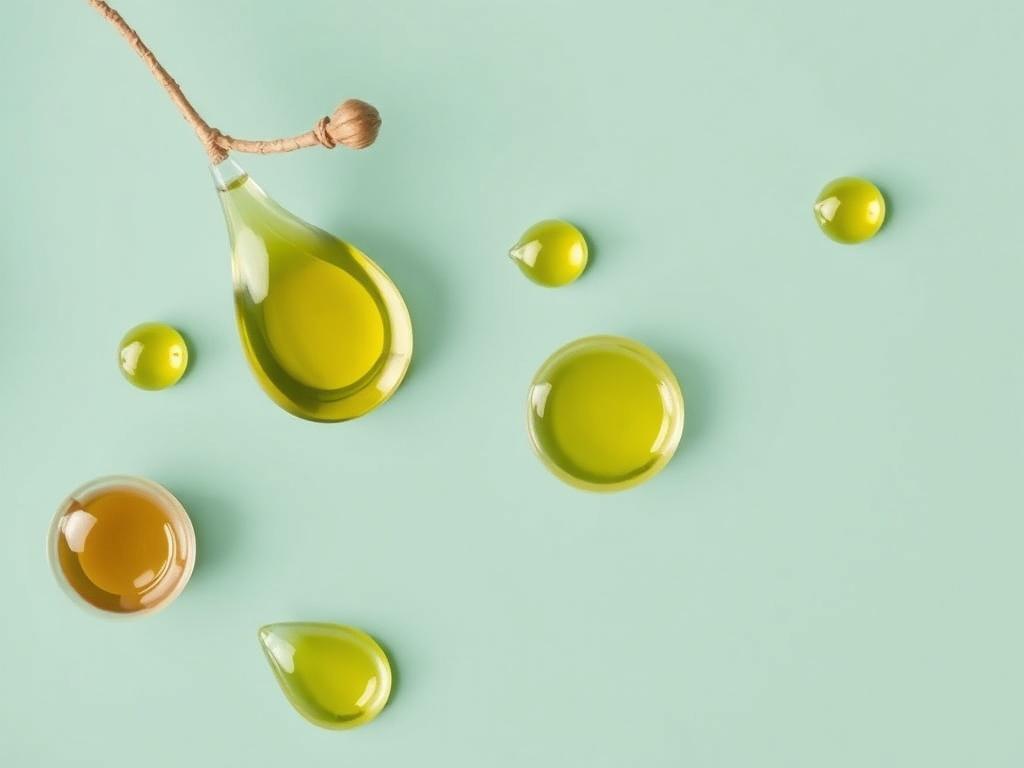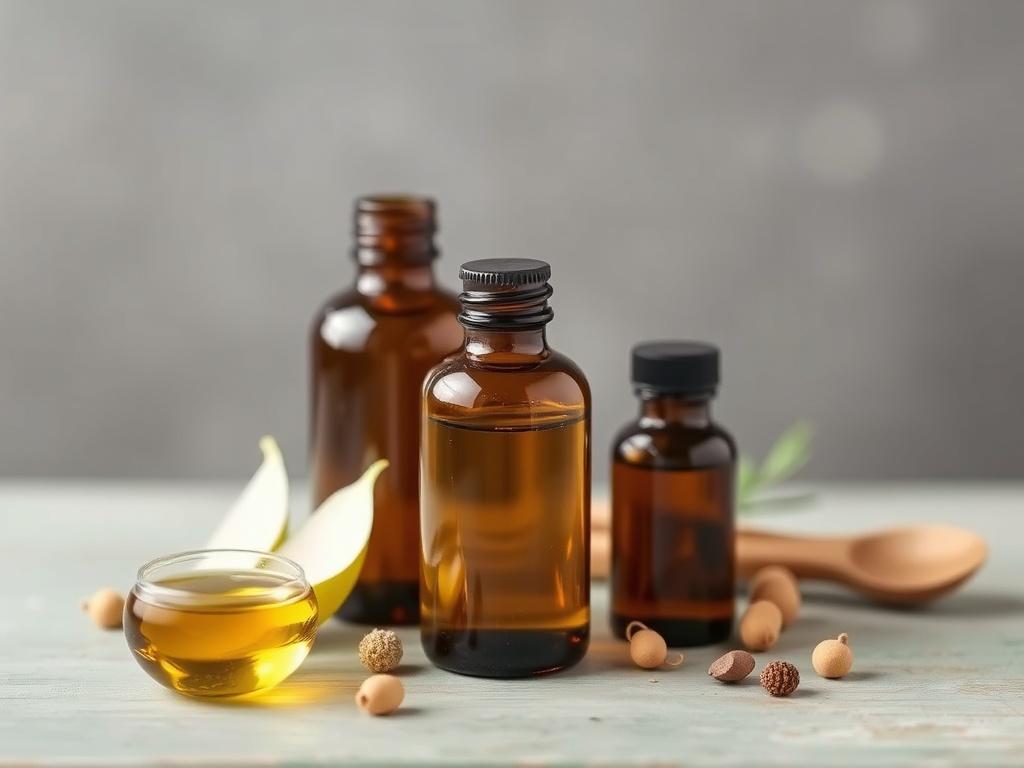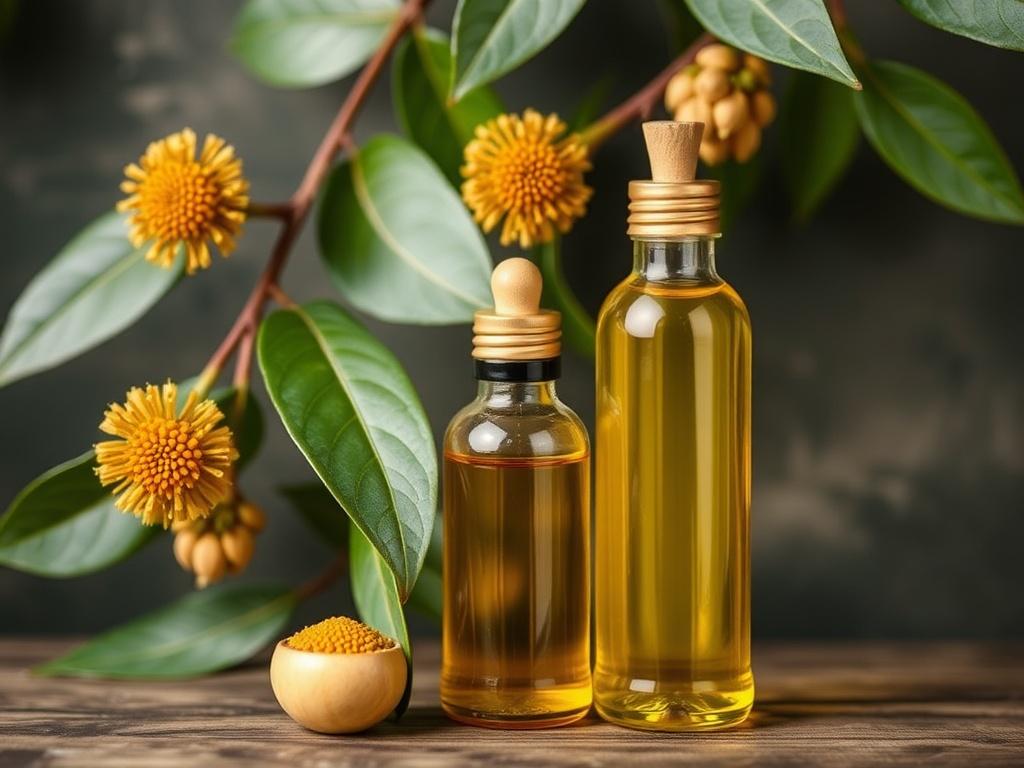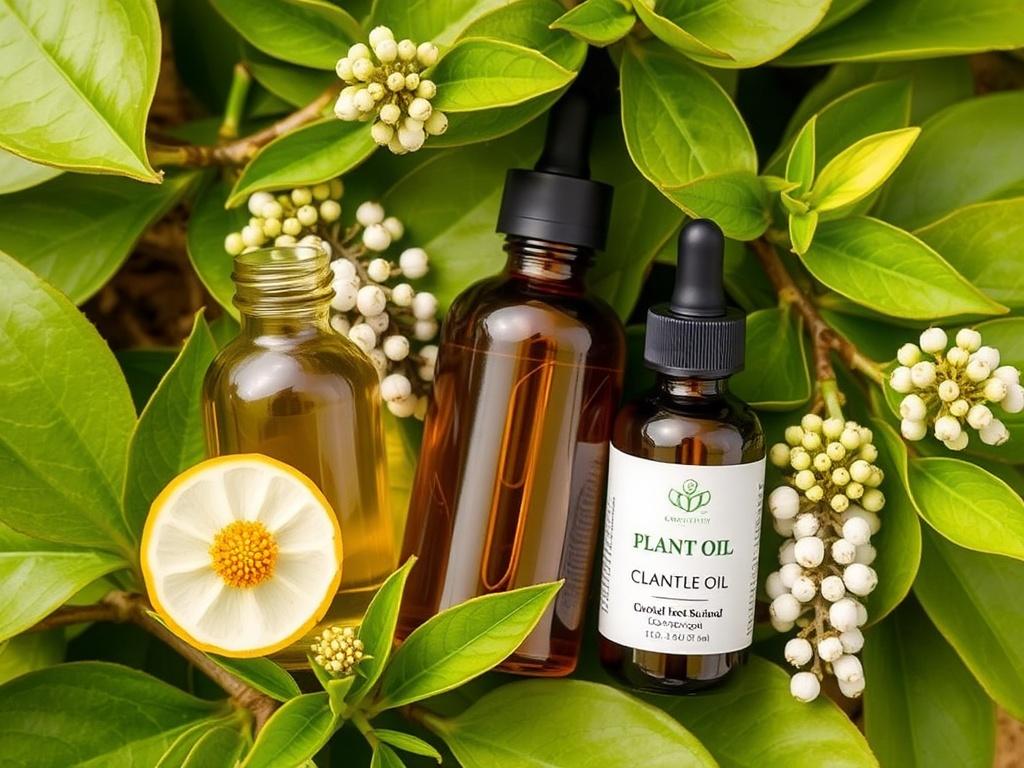SQLITE NOT INSTALLED
When you think of plant oils, what comes to mind? A small glass bottle with a dropper? A golden sheen on a salad? For many of us, vegetable oils are both humble and miraculous—simple extracts that hold complicated chemistry and surprising beauty benefits. This article walks you through the science, the senses, and the practical ways to use plant oils on skin and hair. Expect clear guidance, practical recipes, and a few professional tips you can use today.
We won’t drown you in jargon, but we will explain what fatty acids do, why “cold-pressed” matters, and how to choose the right oil for your needs. You’ll read about popular oils like argan and jojoba, lesser-known gems like tamanu and marula, and the environmental and safety considerations that deserve attention. By the end you’ll know how to read a label, blend a serum, treat dry scalp, and keep oils fresh on your shelf.
What vegetable oils are—and why they matter
Vegetable oils are extracts from seeds, nuts, fruits, or kernels. They are not essential oils; they are the carrier oils that carry nutrients, fatty acids, and sometimes fragrant compounds. In cosmetic use they act as emollients (softening skin), occlusives (reducing water loss), carriers for active ingredients, and occasionally as mild cleansers. Their composition is a mix of triglycerides—three fatty acids bound to glycerol—plus micronutrients like tocopherols (vitamin E), phytosterols, and pigments.
Why do they matter? Because skin and hair are, in many ways, made of lipids. The outer layer of the skin—the stratum corneum—relies on a balanced lipid matrix to retain moisture and defend against irritants. Hair strands are composed of a protein-rich cortex wrapped in a lipid-rich cuticle. Applying oils can strengthen the barrier, improve shine, and reduce breakage when you pick the right oil for the right purpose.
Not all oils act the same. Some penetrate deeply and mimic skin lipids; others sit on the surface creating a protective film. Some are light and fast-absorbing; others are rich and slow to absorb. Knowing those differences helps you pick an oil that suits your skin type, hair porosity, and daily routine.
How oils are extracted: cold-pressed, refined, fractionated
Extraction method alters both performance and shelf life. Cold-pressing mechanically squeezes oil at low temperatures to preserve fragile nutrients and aroma. These unrefined oils often have richer scent and color and more antioxidants, but can be more variable from batch to batch.
Refined oils undergo heat and filtration to remove odors, colors, and impurities. They tend to be more stable and neutral-smelling—useful in mass-market cosmetics—but they lose some antioxidants and scent. Fractionated oils, such as fractionated coconut oil, have certain fatty acids removed so the resulting product remains liquid and very stable; they are odorless and excellent as carrier oils.
Each extraction method carries trade-offs. If you want fragrant, nutrient-rich oil for facial serums, choose unrefined cold-pressed. If you need a long-lasting, neutral base for a body oil or commercial product, refined or fractionated may be better.
Storage and shelf life
Oils oxidize. Light, heat, and oxygen gradually break down the fatty acids, producing off-odors and potentially irritating compounds. Store oils in dark glass bottles, away from heat and direct sunlight. Small amounts—and adding a natural antioxidant like mixed tocopherols—help them last longer. A general guideline: most unrefined oils keep 6–12 months once opened; refined oils often last 12–24 months.
Rancid oil smells stale, sour, or paint-like. If an oil smells off, discard it. Rancidity isn’t just unpleasant; oxidized oils can irritate skin and counter the benefits you were aiming for.
Understanding fatty acids: what they do for skin and hair
Fatty acids determine how an oil behaves. The three main types you’ll hear about are saturated (stable and occlusive), monounsaturated (penetrating and balancing), and polyunsaturated (nutrient-rich but prone to oxidation). Let’s look at their roles.
– Saturated fatty acids (e.g., lauric, palmitic) create a protective layer that reduces water loss. Coconut oil is high in lauric acid, which gives it antibacterial properties and a tendency to solidify at cooler temperatures.
– Monounsaturated fatty acids (oleic acid) are smoothing and penetrating. Olive and avocado oils are rich in oleic acid, which can be very nourishing for dry or mature skin but may be too heavy for oily or acne-prone skin.
– Polyunsaturated fatty acids (linoleic and alpha-linolenic acid) are essential for skin barrier repair and inflammation control. Oils like grapeseed, safflower, and hemp seed are high in linoleic acid and are often better suited for oily or acne-prone skin because they support barrier function without clogging pores as readily.
How to use fatty acid knowledge
Look at your skin: if it’s dry and flaky, prioritize oils high in oleic acid. If it’s oily or acne-prone, choose oils higher in linoleic acid. For hair, heavier oils with more saturated and monounsaturated fats can help seal the cuticle and reduce frizz; lighter oils can be used as finishing serums or scalp treatments.
Common vegetable oils and their primary benefits
There are dozens of plant oils in the cosmetic world; here I highlight the most useful ones and what they typically do. Each description includes how it feels, what skin or hair types it suits, and any special notes.
Argan oil
Origin: kernels of the argan tree (Morocco). Profile: rich in oleic and linoleic acids, vitamin E, and phenolic compounds. Feel: medium weight, slightly nutty scent.
Benefits: argan oil is versatile—good for dry skin, brittle hair, and as a lightweight facial oil if used sparingly. It tames frizz, adds shine, and provides antioxidant support. Because it’s mildly penetrating, it works well on both hair ends and the face.
Jojoba oil
Origin: seeds of the jojoba shrub; technically a liquid wax. Profile: wax esters similar to human sebum. Feel: light, fast-absorbing, non-greasy.
Benefits: excellent for balancing oily or acne-prone skin because it mimics sebum and can signal the skin to produce less oil. It’s also a favorite for scalp treatments and for diluting essential oils in massage blends.
Coconut oil
Origin: coconut meat. Profile: high in lauric acid (saturated). Feel: solid at cooler temps, melts on contact.
Benefits: antimicrobial and highly occlusive; good for barrier repair and for use in hair masks to reduce protein loss. Not ideal for acne-prone facial skin because it can be comedogenic for some people.
Sweet almond oil
Origin: sweet almonds. Profile: high in oleic acid, vitamin E. Feel: light to medium, pleasant nutty aroma.
Benefits: gentle and versatile—suitable for body massage, baby care, and as a soothing facial oil for dry or sensitive skin. Avoid if you have nut allergies.
Rosehip oil
Origin: seeds of wild rose hips. Profile: rich in linoleic acid, vitamin A (retinoic acid precursors), carotenoids. Feel: light, easily absorbed, with a woody scent.
Benefits: prized for skin regeneration and for supporting texture and pigmentation. Rosehip is a favorite for mature skin, sun-damaged areas, and for reducing the appearance of scars and fine lines. Use at night and pair with sunscreen during the day—its vitamin A content can increase photosensitivity in rare cases.
Grapeseed oil
Origin: seeds left from winemaking. Profile: high in linoleic acid, light and neutral. Feel: very light, quickly absorbed.
Benefits: excellent for oily and acne-prone skin because of the linoleic-rich profile. Also a favorite as a massage oil or hair serum when you want no heaviness or residue.
Avocado oil
Origin: avocado pulp. Profile: high oleic acid, rich in vitamins A, D, E. Feel: rich, creamy, heavier on the skin.
Benefits: deeply nourishing for very dry or mature skin, and for dry, damaged hair. Works well in winter when barrier protection is needed.
Castor oil
Origin: castor seed (ricinus communis). Profile: very high in ricinoleic acid (a unique monounsaturated fatty acid). Feel: thick, viscous.
Benefits: traditionally used for hair growth and lash/brow serums because it creates a protective film and may improve hair strength. Because of its thickness, it’s usually blended with lighter oils to ease application.
Marula oil
Origin: kernels of the Marula tree (Southern Africa). Profile: high oleic acid, antioxidants, rapidly absorbed. Feel: luxurious, light yet nourishing.
Benefits: a modern favorite for facial oils; it soothes, hydrates, and leaves a satin finish. Great for combination and aging skin.
Hemp seed oil
Origin: seeds of Cannabis sativa (non-psychoactive). Profile: balanced omega-6 to omega-3 ratio, high linoleic acid. Feel: light and slightly grassy.
Benefits: anti-inflammatory potential and good barrier support. Often used for sensitive or eczema-prone skin. Avoid confusion with CBD oil—hemp seed oil contains little to no cannabinoids.
Comedogenic ratings and how to choose safely
Comedogenicity describes how likely an oil is to clog pores. Ratings exist on a 0–5 scale, but they’re general guidelines rather than absolutes. Individual responses vary. The table below summarizes common oils and typical comedogenic tendencies.
| Oil | Typical Comedogenic Rating | Recommended Use |
|---|---|---|
| Jojoba | 0–2 | Facial oil, all skin types (especially oily) |
| Grapeseed | 0 | Oily/acne-prone skin, lightweight serums |
| Argan | 0–2 | Facial and hair oil, dry to normal skin |
| Rosehip | 0–1 | Mature and damaged skin, fading scars |
| Sweet almond | 2 | Body oil, dry and sensitive skin |
| Olive oil (extra virgin) | 2–3 | Dry skin and hair, not ideal for acne-prone faces |
| Coconut oil (unrefined) | 4 | Great for hair and body, can clog facial pores |
| Castor oil | 1–2 | Scalp and lash serums (dilute) |
| Avocado oil | 2–3 | Rich moisturizer for very dry skin |
Use this table as a starting point. If you’re acne-prone, patch-test a new oil on your jawline for several days before applying it across your face. Pay attention to pore-clogging tendencies and don’t confuse a temporary increase in oiliness with comedogenesis.
Why some oils clog pores
Comedogenic potential is related to molecular size and fatty acid composition. Larger, heavier triglycerides and oils high in certain saturated fats can sit on the skin surface and trap sebum and debris. Lighter oils with a higher proportion of linoleic acid tend to be less pore-clogging and can even improve acne-prone skin when they restore the skin’s lipid balance.
Practical uses: routines for face, body, and hair
Let’s move from theory to practice. Below are tailored routines and suggestions that you can apply based on your skin type and hair needs. Each routine includes oil choices, frequency, and application tips.
Facial routines
Day routine for normal to dry skin:
- Cleanse with a mild, non-stripping cleanser.
- Apply a lightweight vitamin C serum (if used).
- Seal in moisture with 2–3 drops of argan, marula, or rosehip oil—pressed into damp skin.
- Finish with sunscreen.
Night routine for oily or acne-prone skin:
- Double-cleanse if wearing sunscreen or makeup (oil cleanse followed by a gentle water-based cleanser).
- Apply targeted actives (benzoyl peroxide, salicylic acid, or prescription treatments) as directed.
- Use 1–2 drops of jojoba or grapeseed oil to avoid over-drying.
Night routine for mature skin:
- Cleanse gently and apply a retinoid or peptide serum if used.
- Follow with 2–4 drops of rosehip, argan, or avocado oil to support barrier repair and provide antioxidants.
- Pat gently; let oil absorb before bed.
Body care
For dry winter skin, a heavier body oil or a balm works wonders applied after showering to damp skin. Oils like sweet almond, avocado, or sesame deliver long-lasting comfort. For everyday use, lighter oils like fractionated coconut or grapeseed make a non-greasy option. Massage increases circulation and helps the oil penetrate; it’s also excellent for relaxation.
Hair care
Leave-in serum for ends: warm 1–2 drops of argan or marula oil between your palms and smooth through the ends of damp or dry hair to reduce frizz and add shine.
Pre-shampoo treatment: mix coconut oil (for porosity and protein protection) with a lighter oil like grapeseed. Apply to dry hair, concentrating on the ends, leave 30 minutes to overnight, then shampoo as usual.
Scalp treatment: if your scalp is oily and flaky, a dilute castor or jojoba blend with a few drops of tea tree essential oil (use caution and dilute properly) can help. For very dry scalps, massage in avocado or olive oil, leave 15–30 minutes, then shampoo.
DIY blends and recipes
Creating your own blends lets you tailor oils to your needs. Here are tested recipes and simple formulations. Always patch-test and use clean tools.
Basic face serum — for normal or combination skin
- Base: 15 ml jojoba oil
- Add: 10 ml argan oil
- Add: 5 ml rosehip oil
- Optional: 3 drops vitamin E (tocopherol) as an antioxidant
Mix in a dark glass bottle. Use 2–3 drops on clean skin at night or in the morning under sunscreen.
Lightweight body oil — for daily use
- 100 ml grapeseed oil
- 10 ml fractionated coconut oil
- 10 drops of lavender essential oil (optional)
Blend and apply to damp skin after showering. This absorbent blend leaves little residue while delivering hydration.
Deep conditioning hair mask
- 2 tablespoons coconut oil
- 1 tablespoon castor oil
- 1 tablespoon argan oil
- Warm slightly to liquefy, apply to mid-lengths and ends, leave 30 minutes to overnight, shampoo thoroughly.
This mask combines protein protection (coconut) and strengthening properties (castor) with shine and smoothing (argan).
Scalp stimulation blend — for scalp circulation and growth support
- 30 ml jojoba oil
- 15 ml castor oil
- 5 drops rosemary essential oil (dilute and use sparingly)
Massage a small amount into the scalp for 5–10 minutes, leave 15–60 minutes, then shampoo. Regular massage increases blood flow and feels restorative; rosemary oil is commonly used in studies supporting scalp health, but use with caution and avoid if pregnant or sensitive.
How to blend oils safely
Blending is both art and science. Keep proportions sensible: lighter oils should remain dominant for easy absorption unless you intentionally want a richer product. Use clean, dry instruments and bottles. Dark glass preserves oil better than clear glass or plastic. Label your blends with composition, date, and an estimated expiration.
Essential oils can add functional benefits and scent, but they must be diluted correctly. A conservative guideline is 0.5–2% essential oil concentration for leave-on facial products (that’s roughly 3–12 drops per 30 ml carrier oil). For body products, 1–3% is common. For children, pregnant people, and sensitive skin, lower concentrations—or none at all—are safer.
Preserving your blends
Add tocopherols (natural vitamin E) at 0.5–1% as an antioxidant to slow oxidation. Avoid water in oil-only products—water invites microbial growth. If you plan to make emulsions (oil mixed with water), use a preservative system appropriate to the formula; otherwise, keep it anhydrous.
Active-sparing: pairing oils with actives and treatments

Some oils pair well with active skin ingredients; others may interfere. For instance, vitamin C serums often work best applied before oils so the oil doesn’t block absorption. Retinoids are potent and can be irritating; combining them with a soothing oil like jojoba or rosehip can mitigate dryness. Salicylic acid (BHA) requires direct contact with the skin to exfoliate; applying it before an oil allows it to penetrate.
When using professional treatments (chemical peels, prescription retinoids or acids), consult a dermatologist about which oils to avoid during treatment phases. Oils with high vitamin A activity (e.g., rosehip) might need to be used carefully alongside retinoids.
Skin conditions and oils: eczema, rosacea, acne

Oils can be supportive for many skin conditions, but they’re not cure-alls. Here’s a practical look at common concerns.
Eczema and atopic skin
Eczema benefits from barrier repair and anti-inflammatory support. Oils high in linoleic acid and gamma-linolenic acid (GLA) can be helpful; examples include evening primrose oil, borage oil, and hemp seed oil. A gentle emollient routine—cleanse with a non-foaming cleanser, apply a thin layer of oil to damp skin, and use a prescribed topical steroid when flares occur—often works well. Avoid heavily fragranced oils and patch-test first.
Rosacea
Rosacea-prone skin needs soothing, non-irritating oils. Jojoba, squalane, and marula are commonly tolerated. Avoid hot compresses and robust exfoliants during flares. If turmeric, tea tree, or other essential oils are considered, use extreme caution—they can be sensitizing.
Acne
Contrary to intuition, oil-based care can help acne-prone skin when you choose non-comedogenic oils. Grapeseed, hemp seed, and jojoba often improve skin barrier function without clogging pores. However, if your acne is moderate to severe, consult a dermatologist before using oils as a main therapy. Oils can complement medical treatments but are rarely the primary solution for active inflammatory acne.
Environmental, ethical, and sustainability considerations
Demand for certain oils has environmental consequences. Argan oil’s popularity boosted livelihoods in Morocco but also created pressure on argan forests and local ecosystems. Palm oil is notorious for deforestation and habitat loss when produced unsustainably. Choosing ethically sourced, certified organic, or small-batch producers can reduce your environmental footprint.
Look for fair-trade certifications, community-based cooperatives, and transparent supply chains. Cold-pressed small-batch producers often provide traceability and pay better prices to local harvesters. If sustainability matters to you, research brands and prioritize transparency over marketing claims.
Allergies and contraindications
Nut oils pose a risk to people with nut allergies. Always check the botanical source and avoid almond, peanut, or macadamia oils if you have known allergies. Patch-test any new oil on inner forearm and wait 48 hours to check for reaction. For pregnant or nursing people, consult with a healthcare professional before using less common oils and certain essential oils (like rosemary, clary sage, and others that have cautions).
Also be mindful when using oils before sun exposure. Some botanical extracts can increase photosensitivity. When in doubt, apply oils at night and use broad-spectrum sunscreen during the day.
Patch-testing protocol
- Choose a discreet area like the inside of the forearm.
- Apply a small amount of the oil and cover with a bandage for 24 hours if you want a rigorous test.
- Observe for redness, itching, or bumps for 48–72 hours.
- If any reaction occurs, discontinue and consult a dermatologist if severe.
Common myths and mistakes
There are several persistent myths about plant oils. Let’s clear the air on the most common ones.
“Natural oils always beat synthetic products”
Natural doesn’t guarantee safety or effectiveness. Synthetics are not inherently inferior; they can be more stable, hypoallergenic, or precisely formulated. Use what works for your skin, whether natural or synthetic.
“All oils are comedogenic”
Not true. Comedogenicity varies widely: some oils are non-comedogenic for most people. Personal testing is the best guide.
“Oils block absorption of other products”
Oils can slow penetration of water-based actives if applied first; generally, apply water-based serums first and oil last to seal in actives. If you use acids or retinoids, give them time to absorb before oil application.
Buying tips: what to look for on labels
Labels tell a story if you know how to read them. Here’s what to watch for when buying a cosmetic oil.
- Botanical name (Latin) — e.g., Argania spinosa for argan oil. This prevents confusion with similar names.
- Extraction method — cold-pressed/unrefined is often best for nutrient-rich oils.
- Country of origin — useful for sustainability and authenticity checks.
- Certifications — organic, fair trade, or other certifications can indicate responsible practices.
- Packaging — dark glass is preferable to plastic or clear glass.
- Expiry or best-before date — fresh oil is better.
Beware of vague marketing terms like “pure” without botanical names or origin details. If a product lacks transparency, move on.
Comparative reference tables

Below are two quick-reference tables: one shows fatty-acid highlights for common oils, the other suggests best uses by skin/hair concern.
| Oil | Main Fatty Acids | Tender Features |
|---|---|---|
| Argan | Oleic, linoleic | Vitamin E, antioxidant; good for hair and face |
| Jojoba | Wax esters (sebum-like) | Balances sebum, non-greasy |
| Coconut | Lauric, myristic | Antimicrobial, occlusive, solid at cool temps |
| Grapeseed | Linoleic | Light, non-greasy; good for oily skin |
| Rosehip | Linoleic, alpha-linolenic | Vitamin A precursors, skin regeneration |
| Castor | Ricinoleic | Thick, film-forming; hair-strengthening |
| Avocado | Oleic | Nutrient dense, good for dry skin |
| Concern | Top Oil Choices | Notes |
|---|---|---|
| Oily/acne-prone skin | Grapeseed, jojoba, hemp seed | Prefer linoleic-rich, light oils |
| Dry, mature skin | Avocado, rosehip, argan | Richer oils and antioxidants help repair |
| Dry hair ends | Argan, marula, coconut | Use sparingly on ends to seal and add shine |
| Scalp stimulation | Castor, jojoba (with proper dilution) | Massage increases circulation; avoid heavy build-up |
| Sensitive/eczema-prone | Hemp seed, jojoba, calendula-infused oils | Avoid fragrances and hot essential oils |
Mistakes to avoid
Even with good information, people often make the same mistakes. Here are a few to watch for:
- Using heavy oils on oily faces without testing. Start with small areas.
- Assuming “natural” equals safe. Patch-test anyway.
- Storing oils in warm, sunny places. Keep them cool and dark.
- Mixing water into oil-only blends without preservatives.
- Overusing essential oils in facial blends. Less is often more.
When to see a professional
If you have persistent skin issues—severe acne, unexplained rashes, severe eczema, or scalp conditions like extensive hair loss—see a dermatologist or trichologist. Oils can assist, but they are adjunctive care, not replacements for medical treatment when the condition requires it.
Also consult a professional if you’re planning to use carrier oils with prescription topical medications or if you’re pregnant and considering certain botanical extracts and essential oils. Safety first; beauty second.
Trends and innovations
Formulation labs continue to innovate with cold-ultra-pressed techniques, supercritical CO2 extraction, and enzymatic processing to extract targeted compounds without heat. Squalane (often derived from olive or sugarcane) replaces heavier oils in many formulations because it’s exceptionally stable and lightweight. Bioengineering is also creating plant-based lipids that mimic skin ceramides for barrier repair.
Smaller brands are valuing traceability and regenerative agriculture—methods that not only protect ecosystems but often produce oils with richer nutrient content due to healthier soil and biodiversity.
Final notes and a simple starter plan
To begin, build a small, functional kit: jojoba (balancing), argan (versatile), grapeseed (light), and a specialty like rosehip or marula. Learn how each behaves on your skin and hair. Keep notes for a month: how your skin feels, pore reactions, hair texture. Simple observation is often the best guide.
Remember, plant oils are tools—not magic. They work best when matched to physiology and lifestyle. The right oil can soothe, restore, and simplify a routine. The wrong oil can cause congestion and frustration. With a little experimenting and attention to sourcing and storage, you’ll find a few favorites that truly feel like treasures.
Quick-reference starter routine (one-week experiment)
- Day 1–2: Patch-test jojoba and grapeseed on the jawline. Observe for reactions.
- Day 3–4: Use jojoba as a morning light moisturizer under SPF and grapeseed as a night serum. Record oiliness and breakouts.
- Day 5: Introduce argan oil to hair ends as a leave-in serum.
- Day 6–7: Try a rosehip drop at night on a small area with the note: any irritation near sun-exposed skin?
- Evaluate at day 8 and decide which oils to keep or discard.
Resources and further reading
Look for peer-reviewed dermatology journals, plant oil composition databases, and reputable formulators’ guides when you want to dig deeper. Books on cosmetic formulation, scientific reviews on essential fatty acids and skin barrier function, and resources from dermatology associations provide solid, practical evidence.
If you’ve enjoyed this guide, keep it handy and refer back as you try new oils. Make note of your reactions, and don’t be shy about reaching out to a skincare professional when you need personalized advice. Plant oils are generous allies—when understood and used well.




